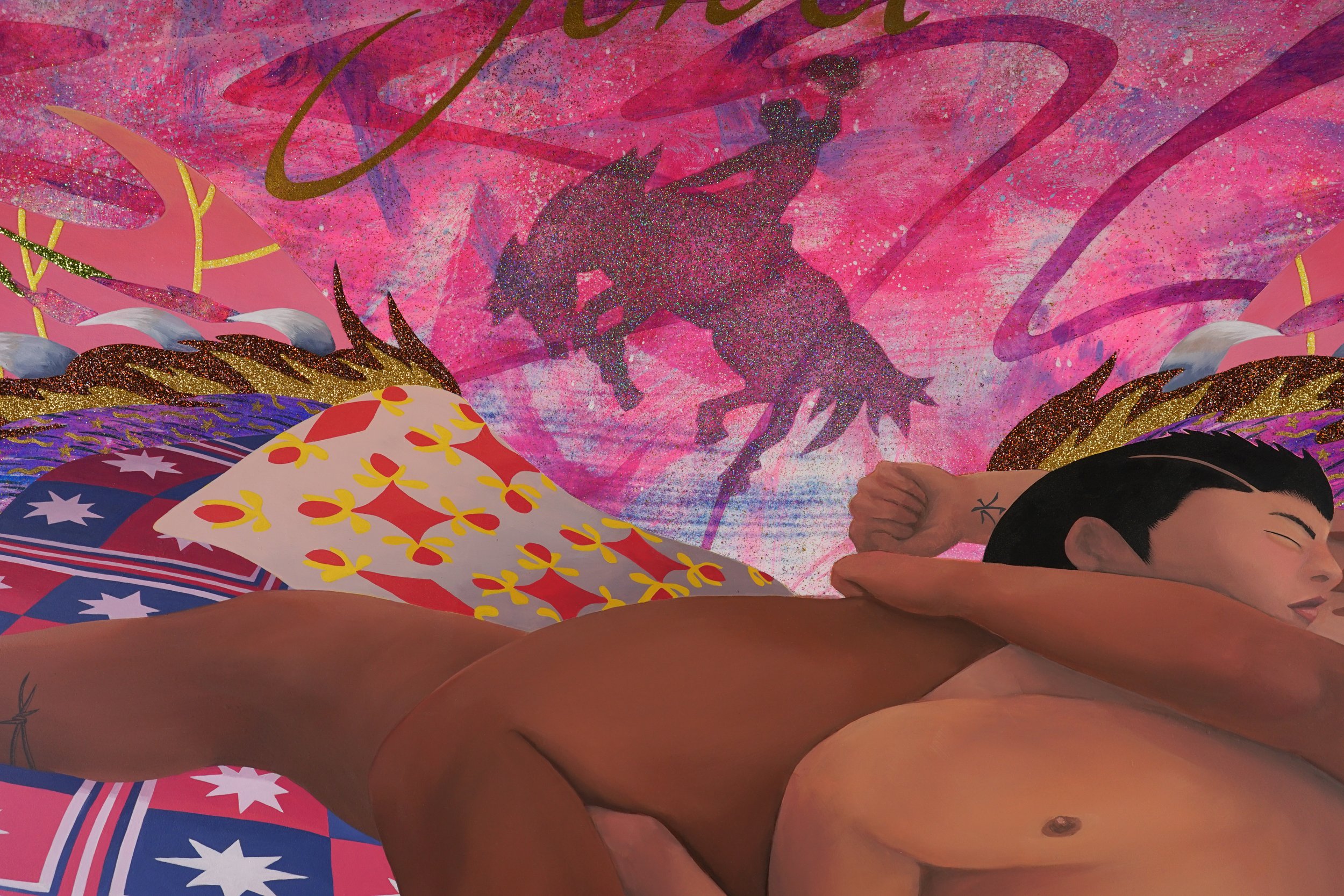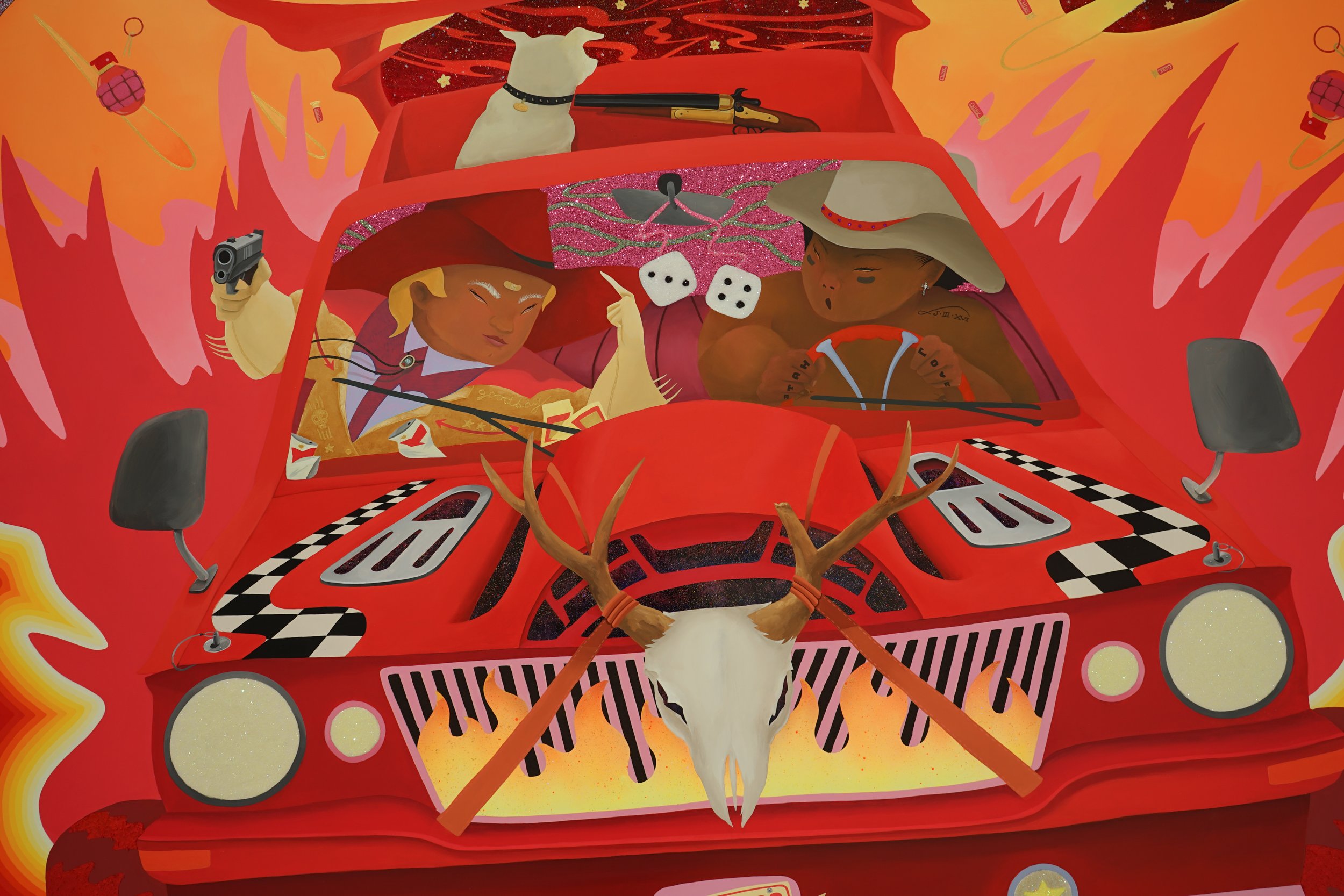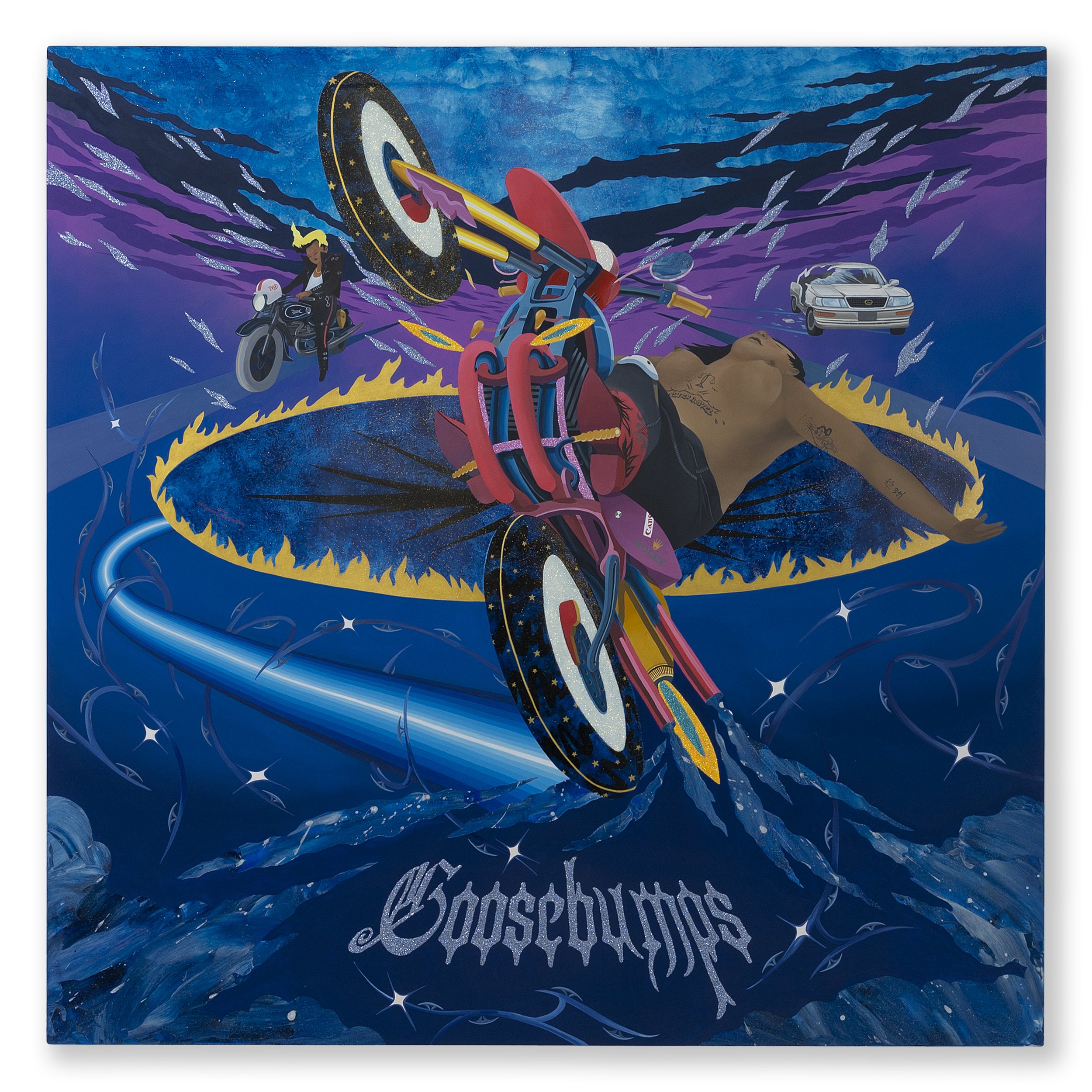Cowboys & Cupids: An Interview with Yowshien Kuo

FORM’s full interview with Yowshien Kuo appears in Vol. XXVII, available on April 25.
Yowshien Kuo is a St. Louis-based painter who aims to explore notions of Asian-American identity, culture, and history. His surreal, colorful paintings are made up of fine brushstrokes and a smooth acrylic finish. Kuo’s work is layered with symbols that embrace multi-faceted interpretations from both Eastern and Western traditions, a practice that reflects his personal experience. Kuo is currently represented by Luce Gallery in Italy.
Evelyn Shi: Could you tell me about your background and how you became the artist that you are today?
Yowshien Kuo: I was born in the United States, but my parents separated almost immediately after I was born. I ended up spending half my life back in Taiwan with my father and the other half in the United States with my mother.
When I was young, my parents noticed me drawing in my bedroom frequently for long periods of time. I feel like I'm quite lucky, especially given a lot of stereotypes around immigrant parents, because they supported my interest in the visual arts at a young age. In Taiwan, I was studying calligraphy, watercolor, painting, and all the traditions of visual arts from that region. Eventually, I went to art school for a bit, but I was a little disappointed by the experience. I'm not sure why, but I decided not to pursue visual arts for a handful of years and pursued a career in music instead, which was always an auxiliary outlet throughout my life.
Music went well, but I got bored of it and eventually returned back to what felt natural to me, which was the visual arts. I completed my graduate degree when I was almost 30 years old. Once I got my graduate degree, I became an adjunct instructor. I always accredited my presence in the classroom [to] my music experience—playing onstage and being in front of people and having the confidence to convey my ideas are related. Now, I’m working in my studio full-time.
ES: My family is actually also from Taiwan, and I also grew up splitting my time between the US and Taiwan and China, so I can relate.
YK: You know what it's like, then—navigating your own identity in terms of coming of age and being so desperate to find a place where you fit in. You have all these questions, but a lot of minority groups are not presented with a way to articulate our emotions about our multicultural experience[s]. Therefore, we hold it inside very deeply. And for me, the years of holding it in has found release through the arts, through music, through poetry, through cinema. That's how we feel like we're not alone in the world and that we have quite a universal experience.
ES: How do you explore Asian-American identity in your work?
YK: As an art student, I would make paintings that fooled the viewer into thinking that only a white person could make these paintings. And then [they would] have this shocking revelation that someone who looks like me, with dark hair and almond-shaped eyes, is making these redneck paintings and celebrating this deep-seated American white culture.
But, that eventually evolved into a conversation that I hope is more effective to the audience—one about inserting Asian bodies into a universal narrative. If I can get audiences to see that Asian bodies are involved in the same emotional world as them, it creates a larger space for empathy. This is a trick that great writers and filmmakers understand very clearly. If you're watching films by Wong Kar-Wai (a director from Hong Kong), for instance, you don't have to be Asian to connect with the characters in the story. You can be from any place or culture, and that is very exciting for me. I think my work has become more sophisticated in that regard—it's not being overly specific but leaving room for the viewer to insert themselves into the scenes that are taking place.
ES: More specifically, your subject matter often includes cowboys in these erotic and fantastical settings. What was the inspiration for this recurring theme?
YK: There are a lot of reasons. Firstly, it is a vehicle to show people what an Asian-American person looks like in a multicultural context. If you paint or show a photograph of an Asian person in the nude or just in daily clothes, we don't know what sort of cultural background they have. I don't know if they speak English or if they're speaking Mandarin or what's going on. Using the cowboy clothes helped show these people in a place they have historically been alienated from. We're coming into a space we haven't been privy to, but we also want to belong.
There’s also the notion of history. Cowboy regalia comes from a time period where a lot of East Asian immigrants started to spread into Western nations. For instance, the Gold Rush era and the building of the Transcontinental Railroad was a period of anti-Chinese propaganda, with the Chinese Exclusion Act during that time as well. I’m also thinking about notions of masculine power that have been present throughout history: the emasculation of Asian-American men through the media and law.
On the erotic quality of my work that sometimes appears, I feel like it’s necessary to make the figures feel real and enter our personal space by exposing vulnerabilities that we hide from the public. These are things we don't want to talk about. Like in one of these paintings, there's this nude figure flying down, and he's farting, and the fart becomes the entire universe. There are people being intimate with each other in different ways. These figures want to belong in a place where they're not fully accepted, but when you fall in love, you are almost blind. You don't realize the ridiculous things that you think and do. So they are often in this state of embarrassment because they're clouded by lust.




